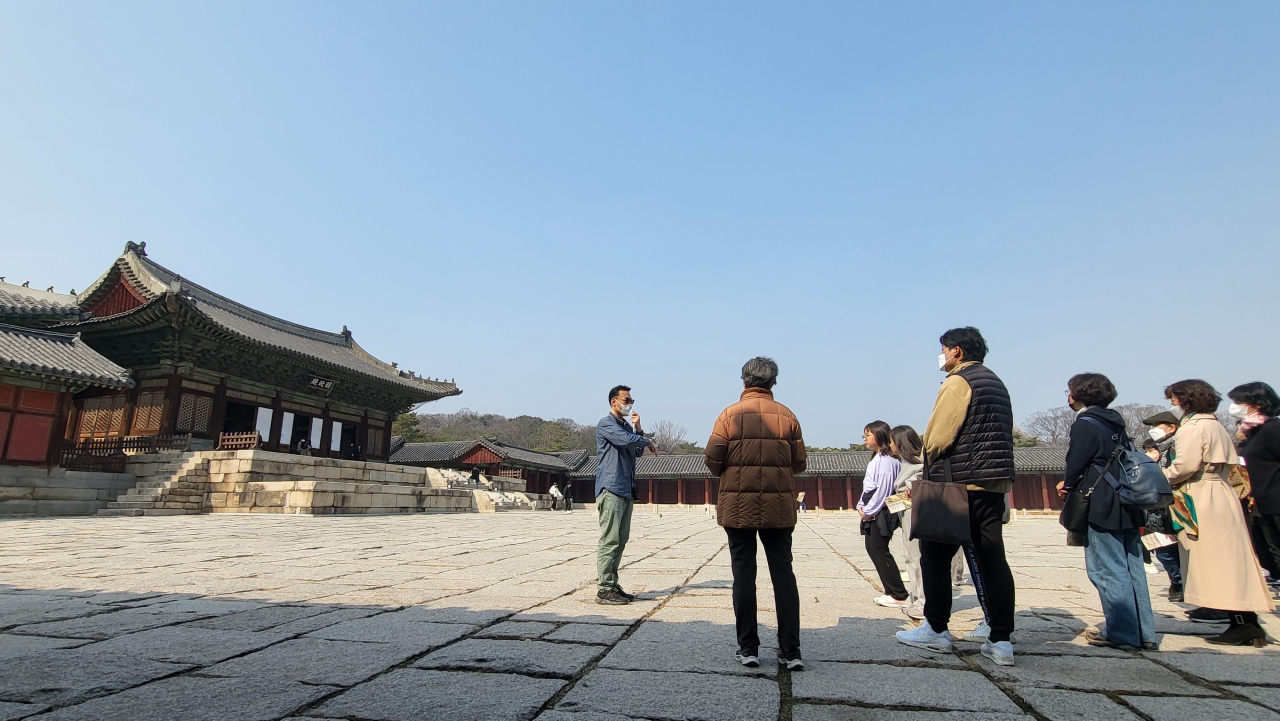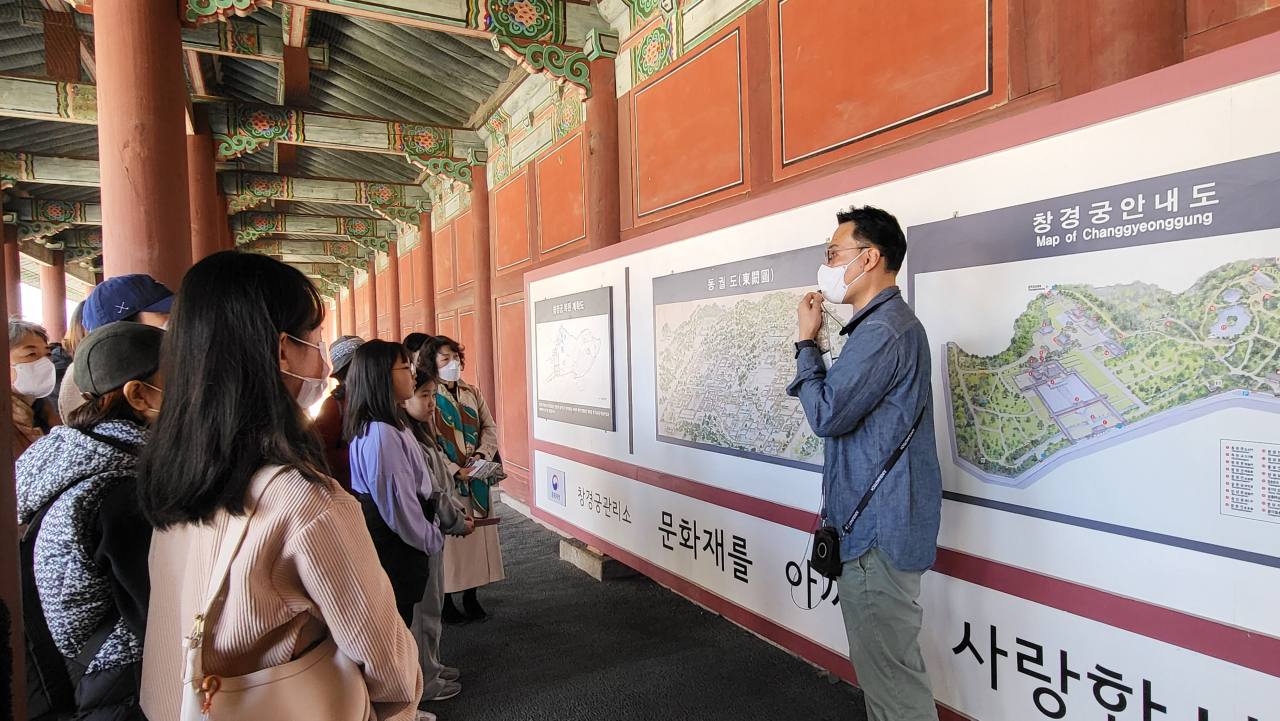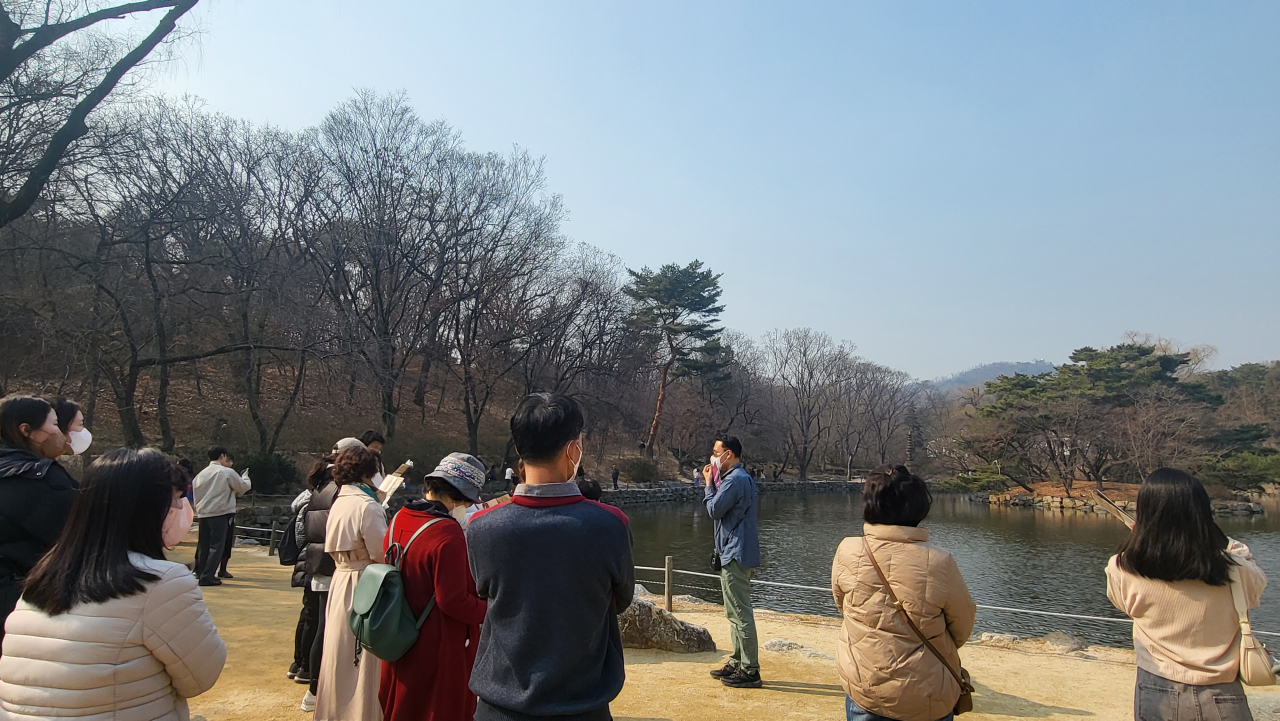 |
Visitors stop to listen to the guide in front of the hall Myeongjeongjeon at Changgyeonggung during a special tour of the palace on Sunday. (Kim Hae-yeon/ The Korea Herald) |
A special tour of the palace Changgyeonggung's architecture and history has returned with the lifting of COVID-19 restrictions.
Launched in 2018, the 90-minute tour comparing the present day palace with the one depicted in Donggwoldo, a palace map painted sometime between 1826 and 1831, is led by a cultural heritage curator. The participants are given pamphlets with a scaled down version of the old map.
This year’s tour, the first since the pandemic, began 1:30 p.m. on Sunday at the Okcheongyo bridge, which served as a symbolic entry courtyard in front of the Honghwamun gate.
"Studies indicate that more than three copies (of Donggwoldo) were initially produced, but only two of them remain today," said Ji Seong-kyun, a heritage commentator, at the start of the tour. Ji added that the two, of the same size but with minor differences, are available for viewing at the Korea University and Donga University museums.
 |
A cultural heritage commentator explains the buildings depicted in Donggwoldo at Changgyeonggung, Sunday. (Kim Hae-yeon/ The Korea Herald) |
Donggwoldo, or the Eastern Palaces, were designated National Treasure No. 249 in 1989.
The drawings showing Changdeokgung and Changgyeonggung is named after the location of the two palaces, east of the main palace of Gyeongbokgung.
The 16-panel screen measures 576 centimeters in width and 273 centimeters in height and offer's a bird's-eye view of the palace.
It depicts the palace grounds and its surroundings in a detailed manner, before the Japanese turned it into a zoo and a botanical garden in 1909, during which many buildings were demolished and burned down.
"Changgyeonggung is indeed an independent palace, but it played a role in supplementing the insufficient living space of Changdeokgung. So the residential area is relatively well developed compared to other palaces," Ji said.
Rather than visiting the main banquet halls and pavilions, the tour focuses on describing the former uses of sites that are now left empty, such as what types of buildings were present there and who had worked there.
 |
Chundangji pond, the last stop of the 90-minute tour at Changgyeonggung (Kim Hae-yeon/ The Korea Herald) |
The commentator also answered visitors' questions on Changgyeonggung's history and royal palaces in general.
Changgyeonggung reopened to the public in 1986 after three years of restoration.
The special tour is conducted at 1:30 p.m. and 2:30 p.m every Sunday until May 28.






![[Weekender] Korea's traditional sauce culture gains global recognition](http://res.heraldm.com/phpwas/restmb_idxmake.php?idx=644&simg=/content/image/2024/11/21/20241121050153_0.jpg)
